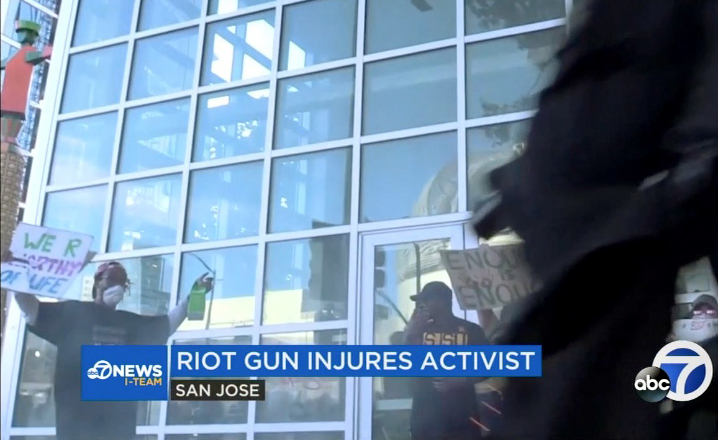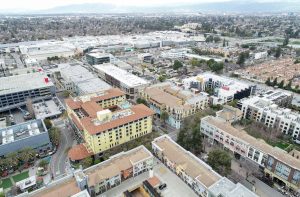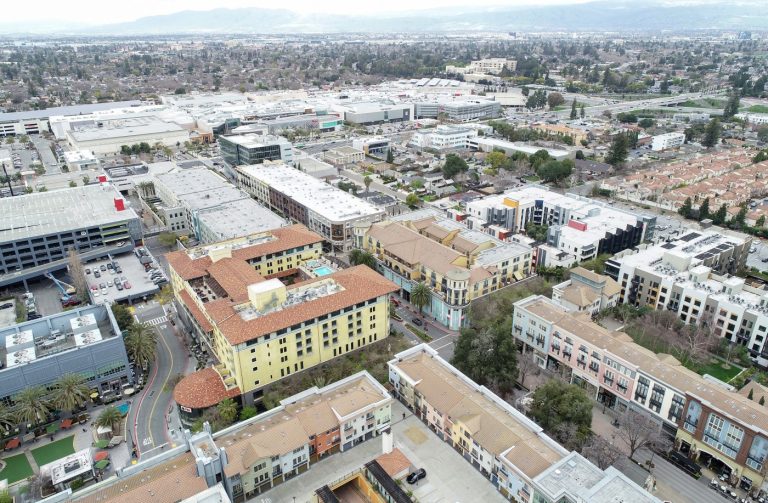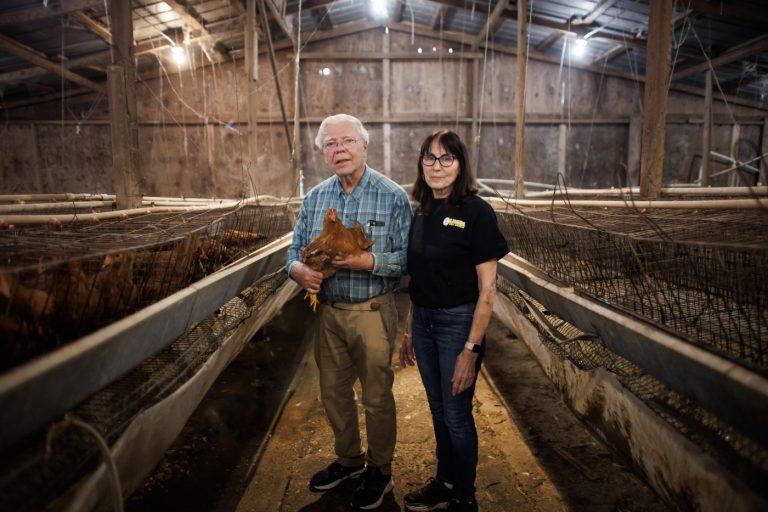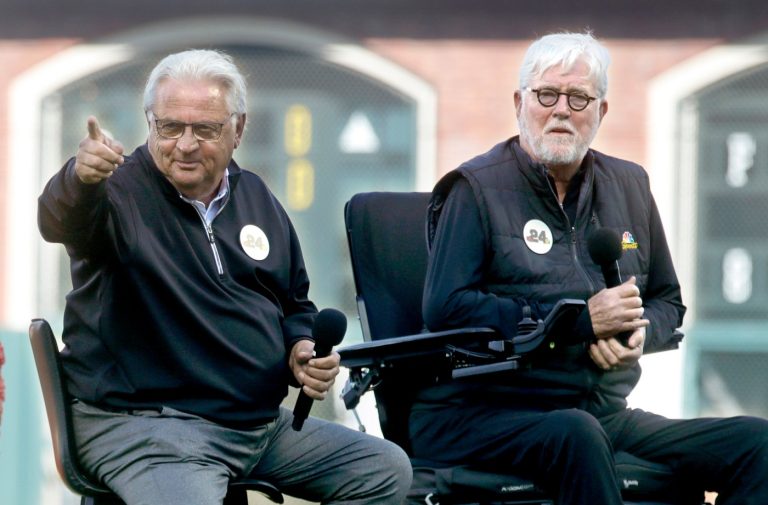A federal appellate court has rejected qualified immunity for a San Jose police officer who infamously shot an activist in the groin with a projectile during George Floyd-related protests downtown four years ago, allowing an excessive force lawsuit to resume.
The Ninth Circuit Court of Appeals wrote in an opinion published Wednesday that a jury should be allowed to decide whether Derrick Sanderlin’s First and Fourth Amendment rights were violated when Officer Michael Panighetti hit him with a 40mm foam baton round as he stood, while holding a sign with his hands up, between a police line and demonstrators near City Hall on May 29, 2020.
For the past year, the City of San Jose has appealed a district court’s denial of qualified immunity for Panighetti, arguing the shooting was not an act of retaliation or meant to suppress Sanderlin’s freedom of speech, and did not constitute excessive force. A three-judge panel for the Ninth Circuit court affirmed the lower court’s ruling.
“It was an undue delay, and I’m glad that we’re back,” said plaintiff attorney Sarah Marinho. “My clients obviously want justice for their harm, but they also collectively want this not to happen to the community ever again. We’re hoping the City of San Jose gets the message.”
The San Jose City Attorney’s Office declined to comment on the ruling, citing its connection to active litigation.
In a related memorandum, the panel reversed a district court decision by finding that Capt. Jason Dwyer, who was the incident commander for that first day of protests, is entitled to qualified immunity and should be severed from the lawsuit. Qualified immunity is a legal protection that shields government employees from litigation over work actions absent a clear violation of constitutional or statutory rights.
The court ruled that Dwyer’s authorization of officers to use rubber and foam munitions and tear gas for crowd control, which the city has since restricted in the wake of the protests, did not violate a clearly established law and thus exempt him from qualified immunity.
Also in the memorandum, the court affirmed the denial of qualified immunity for three officers — Lee Tassio, Jonathan Marshall, and Juan Avila — involving claims from Vera Clanton, a different defendant from the same lawsuit. Clanton was a legal observer documenting the protests when, the plaintiffs assert, she was grabbed, thrown to the ground and had her arms twisted as she was handcuffed.
In its decision with Panighetti, Judges Richard Paez, Jacqueline Nguyen, and Michelle Friedland ruled that the notion of whether the officer was retaliating against Sanderlin’s protected speech is a matter for a jury to evaluate. They also rejected an argument from the city that Panighetti was not trying to restrain or apprehend Sanderlin when he fired the foam round, but was trying to make him leave.
Related Articles
Oakland police detective’s felony bribery scandal further threatens department’s local control
‘I will walk the long path to redemption’: East Bay cop apologizes for fraud scheme as he’s sentenced to federal prison for years
Report on illegal marijuana grow operations highlights East Bay home linked to Oakland cop
Texas man exonerated after 34 years in prison for wrongful conviction
Santa Clara County gun permit scandal: Chief prosecution witness sentenced
“The method of force Panighetti used is, by its nature, intended to incapacitate its target, thereby making it difficult to freely walk away. A reasonable trier of fact viewing this evidence could conclude that by firing a 40mm projectile at Sanderlin’s groin, Panighetti objectively manifested an intent to restrain Sanderlin,” wrote Nguyen, who authored the panel’s opinion.
Nguyen noted in the opinion that the panel viewed the facts in a light most favorable to the plaintiff, which is required at the summary judgment stage when a case is being evaluated for its trial worthiness.
As a result of the court’s ruling Wednesday, the excessive force claims by five other co-plaintiffs that were greenlit for trial in March 2023 — but were held up pending the appeal — will also proceed. Those plaintiffs all contended in the lawsuit that they were injured from rubber bullets, tear gas, or being manhandled by officers while peacefully protesting.
Another multi-plaintiff lawsuit from people injured during the protest, including a bystander who lost his eye to a police projectile, was settled last year by the city for $3.3 million. Marinho said she intends for her clients’ lawsuit to move rapidly toward resolution.
“I have high hopes that it won’t be another year,” she said. “This decision today is moving us forward in that respect.”
